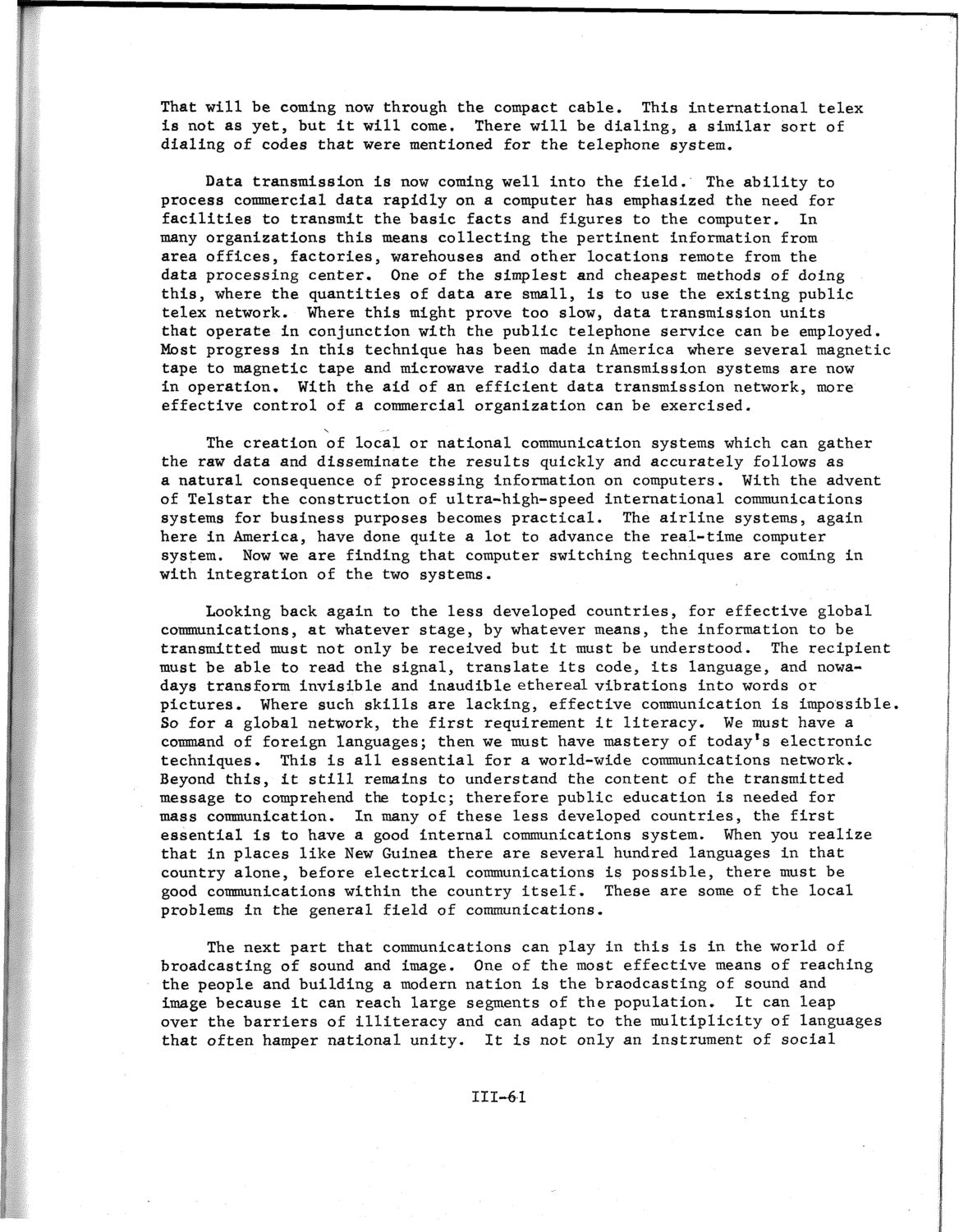| |
| |
Caption: SWE - Proceedings of the First International Conference of Women Engineers and Scientists
This is a reduced-resolution page image for fast online browsing.

EXTRACTED TEXT FROM PAGE:
That will be coming now through the compact cable. This international telex is not as yet, but it will come. There will be dialing, a similar sort of dialing of codes that were mentioned for the telephone system. Data transmission is now coming well into the field. The ability to process commercial data rapidly on a computer has emphasized the need for facilities to transmit the basic facts and figures to the computer. In many organizations this means collecting the pertinent information from area offices, factories, warehouses and other locations remote from the data processing center. One of the simplest and cheapest methods of doing this, where the quantities of data are small, is to use the existing public telex network. Where this might prove too slow, data transmission units that operate in conjunction with the public telephone service can be employed. Most progress in this technique has been made in America where several magnetic tape to magnetic tape and microwave radio data transmission systems are now in operation. With the aid of an efficient data transmission network, more effective control of a commercial organization can be exercised. The creation of local or national communication systems which can gather the raw data and disseminate the results quickly and accurately follows as a natural consequence of processing information on computers. With the advent of Telstar the construction of ultra-high-speed international communications systems for business purposes becomes practical. The airline systems, again here in America, have done quite a lot to advance the real-time computer system. Now we are finding that computer switching techniques are coming in with integration of the two systems. Looking back again to the less developed countries, for effective global communications, at whatever stage, by whatever means, the information to be transmitted must not only be received but it must be understood. The recipient must be able to read the signal, translate its code, its language, and nowadays transform invisible and inaudible ethereal vibrations into words or pictures. Where such skills are lacking, effective communication is impossible. So for a global network, the first requirement it literacy. We must have a command of foreign languages; then we must have mastery of today's electronic techniques. This is all essential for a world-wide communications network. Beyond this, it still remains to understand the content of the transmitted message to comprehend the topic; therefore public education is needed for mass communication. In many of these less developed countries, the first essential is to have a good internal communications system. When you realize that in places like New Guinea there are several hundred languages In that country alone, before electrical communications is possible, there must be good communications within the country itself. These are some of the local problems in the general field of communications. The next part that communications can play in this is in the world of broadcasting of sound and image. One of the most effective means of reaching the people and building a modern nation is the braodcasting of sound and Image because It can reach large segments of the population. It can leap over the barriers of illiteracy and can adapt to the multiplicity of languages that often hamper national unity. It is not only an instrument of social 111-61
| |